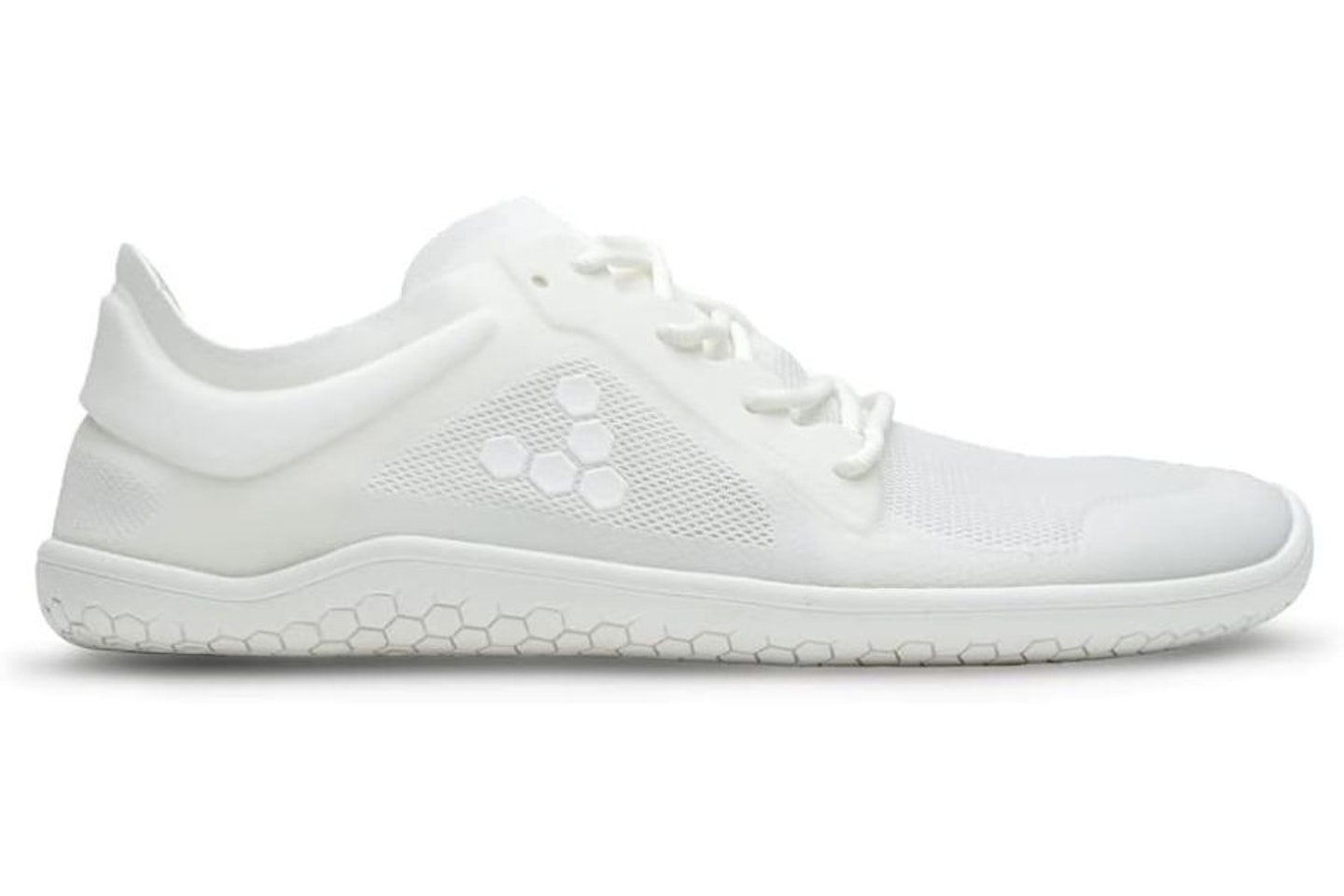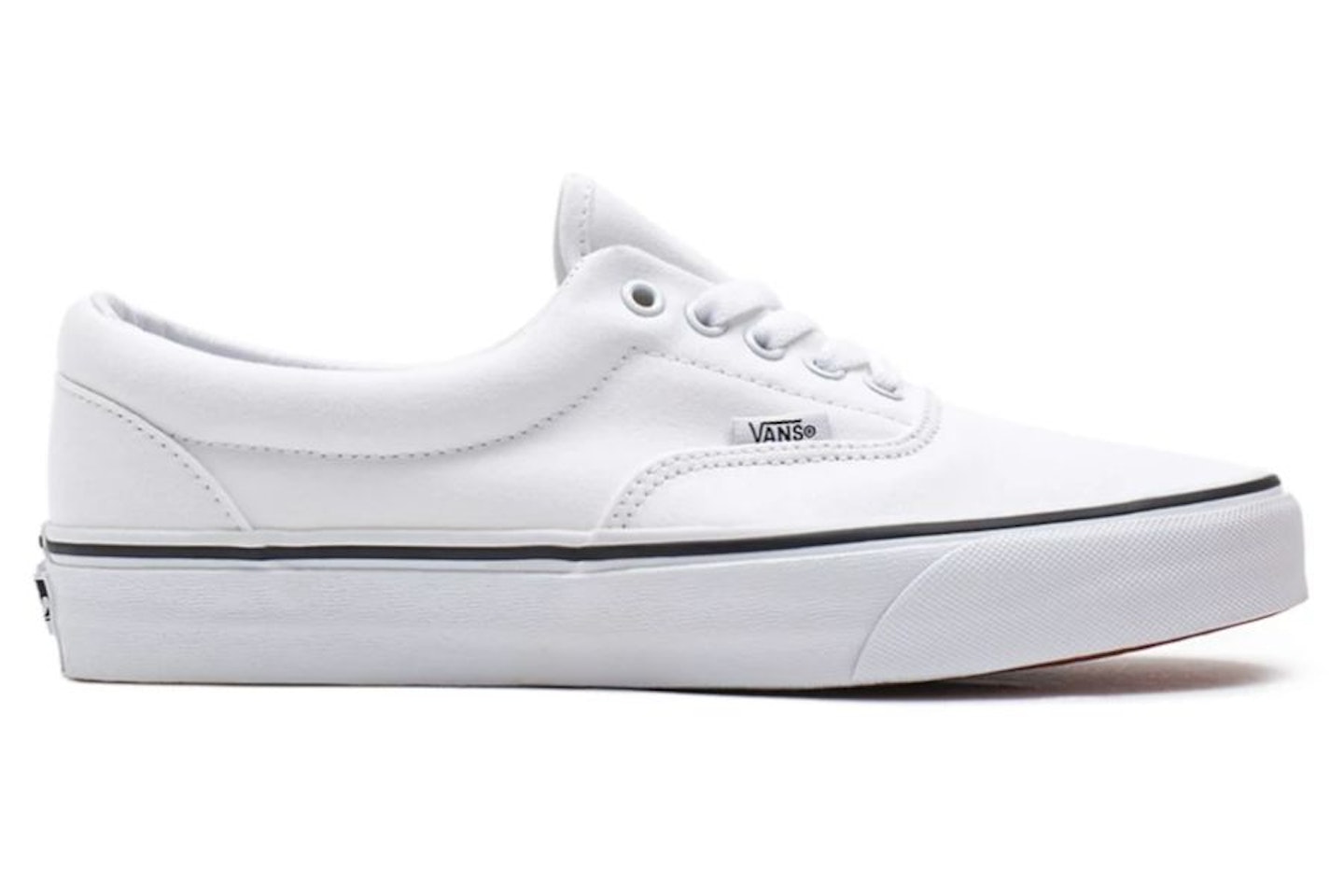When it comes to lifting, the best women's weightlifting shoes and accessories can make all the difference between a successful lift and a struggle. Women who are passionate about strength training may understand the importance of stability, support and comfort during their workouts.
The best women's weightlifting shoes at a glance:
• Best overall women's weightlifting shoes: Adidas Powerlift 5 Weightlifting Shoes - Buy now on Amazon UK
• Best women's weightlifting shoes for rock-solid stability: Nike Romaleos 4 Weightlifting Shoes - Buy now on Nike
• Best barefoot women's weightlifting shoes: VIVOBAREFOOT Primus Lite III Women's Shoes - Buy now on Amazon UK
Why is it important to invest in a good pair of weightlifting shoes?
Like investing in a knee sleeve or weightlifting belt, buying a great pair of weightlifting shoes is essential for a few reasons, each of which directly impacts your performance, safety and overall training experience.
Stability and support: Some weightlifting shoes are engineered with a sturdy, non-compressible sole that provides a stable platform for lifting heavy weights. This stability minimises any unnecessary movement and will allow you to exert maximum force during lifts, which results in not only an improved form, but also better performance.
Promotes better lifting technique: Weightlifting shoes may also have a raised heel to increase ankle movement and allows you to keep an upright torso while squatting or performing other lifts. Your shoes can affect your overall biomechanics, so the right shoes can lead to a better technique and increased strength gains.
Safety: Weightlifting can be a dangerous type of exercise, so proper footwear is always advised. Specific weightlifting shoes minimise the likelihood of your ankle rolling or slipping, providing a secure foundation during your sessions.
Greater power transfer: The solid base of weightlifting shoes enhances the transfer of power from your legs to the weight, allowing you to lift more efficiently and effectively.
Versatility: Although weightlifting shoes are mainly used for lifting, it doesn't just end there. This type of shoes can also be used for squats, deadlifting and other strength training exercises.
To help your conquer the weight room in style and maximise your lifting potential, we've curated a list of the best women's weightlifting shoes. So say goodbye to slipping, discomfort and compromised form, and say hello to your new little lifting partners.
SHOP: The best women's weightlifting shoes
Best overall women's weightlifting shoes

Adidas has long been a trusted name in athletic gear, and the Powerlift 5 are certainly no exception. Its shoes provide excellent stability with a locked-down feel and midfoot stability wedge. With a stylish design and two colours to choose from, you'll not only begin to lift with confidence but also look great while doing it. The Powerlift 5 is a great shoe for those who want to excel in squatting and deadlifting.
Pros
- Canvas upper features open-mesh inserts for breathability
- Both strap and laces keep your foot in place while lifting
- Grippy rubber outsole to keep you planted
Cons
- Some reviewers found the shoe runs small, so if in doubt, size up
| Colours | Black, Grey |
| Heel-to-toe drop | 16mm |
| Sizes | UK 3.5-15 |
- Customer review: "Great training shoe all around for performance, strength training, comfort, and all around style."
Best women's weightlifting shoes for rock-solid stability

NIKE
Nike's Romaleos 4 is a shoe that combines style and substance. Made for the serious weightlifter, it features a dynamic strap system to lock your foot in place and a heel lift to ensure optimal power transfer from the ground. The Romaleos 4 boasts a modern and sleek design, making it a favourite among fitness enthusiasts who prioritise both aesthetics, performance and rock-solid stability.
Pros
- Wide straps over the laces for secure support
- Wide heel makes for a stable base for heavy lifts
- Rigid midsole and heel lift for optimal power transfer from the ground
Cons
- Can sometimes be hard to get hold of due to popularity
| Colours | Black, White |
| Heel-to-toe drop | 20mm |
| Sizes | UK 3-12 |
- Customer review: "I used the Nike Romaleos 4's for the first time today when doing some heavy squats. I’ve got to say the slight elevation in the heel does the world of good, having being use to lifting with just socks on. The overall look is lovely and they definitely improve my lifts. Can’t wait to try them out more. I am glad I sized up by 0.5 as my usual size wouldn’t have fitted."
Best barefoot women's weightlifting shoes

Engineered with a barefoot concept in mind, its shoes are all about natural movement and optimal foot health. With a flexible and breathable construction, they encourage a flatter and more responsive experience with the ground beneath your feet. Its eco-friendly materials and sustainable production processes align with a commitment to a healthier planet, making its shoes a standout choice for conscious consumers.
Pros
- Lightweight for easy movement (182g in a women's UK size 5)
- Thin Primus outsole so you can get as close to the ground as possible
- Stabilising TPU overlays to keep your balance during strength training
Cons
- The barefoot feel may not be for everyone, and it can take some getting used to if you've not used this style of shoe before
| Colours | Black, White, Blue, Grey, Red, Green |
| Heel-to-toe drop | 0.8mm |
| Sizes | UK 3-9 |
- Customer review: "Hate wearing trainers to workout! But being barefoot at the gym, especially in group classes is not permitted… cue these!"
Best budget women's weightlifting shoes

www.vans.co.uk
You might be wondering, why on earth are a pair of classic Vans on a list about weightlifting shoes? Well, Vans may be well-known for their comfort, but their not necessarily well-known for their stable sole construction and zero-drop build. Traditional running shoes that have thick foam midsoles are naturally prone to compressing under heavy weights.
However, Vans tend to be a little more resilient as they are generally good at resisting compression, which makes them a good option for deadlifts, squats and exercises where stability at the ankle is required.
Pros
- 0mm Heel-to-toe drop for a flatter foot positioning
- Very affordable
- Grippy outsole for support with traction
Cons
- Not 'typically' made for weightlifting, so they don't have features to improve power transfer or maintain proper lifting mechanics within them
| Colours | Black, White, Blue |
| Heel-to-toe drop | 0mm |
| Sizes | UK 2.5-15 |
- Customer review: "These bad boys are the real deal. Super comfortable and very smart."
Best women's weightlifting shoes with largest drop
Adidas make the list for the second time with their Adipower Weightlifting 3 shoes. Its shoes feature a raised heel that offers excellent stability and enhanced ankle mobility, crucial for maintaining proper form during lifts like squats and snatches. The durable canvas upper and hook-and-loop instep strap also means the shoes can be easily adjusted. With a large 22mm midsole drop, the Adipower weightlifting 3 is a trusted choice for those looking to elevate their weightlifting game.
Pros
- High-density midsole with a heel-to-toe drop of 22mm
- Low-profile grippy rubber outsole for traction
- Durable canvas upper that's made out of at least 50% recycled content for the more environmentally-conscious lifters
Cons
- Runs small so it's advised to size up by half a size
| Colours | Black, White |
| Heel-to-toe drop | 22mm |
| Sizes | UK 3-15 |
- Customer review: "Pretty stable Adidas lifting shoes for squatting, I like using them even on bench press, the elevated heel gives some stability to my feet as well."
Best women's weightlifting shoe for minimalists

uk.nobullproject.com
If design is your priority, the NOBULL Women's Lifter won't disappoint. Its shoes are built to withstand the toughest workouts with their abrasion-resistant material and seamless construction. There's so much going on inside its shoes, whether that be the roomy forefoot for toe splay, or the moulded insole for natural comfort in the grooves of your feet. This also helps to provide a secure fit, making them a reliable companion during your lifting sessions.
Pros
- Added toe bumper for protection
- Seamless canvas material for durability and a sleek look
- Herringbone outsole pattern for increased traction
Cons
- Specific colours are hard to get hold of due to popularity
| Colours | Toffee, Black, Arctic, Red, Black ivy |
| Heel-to-toe drop | 17.5mm |
| Sizes | UK 2.5-8.5 |
FAQs
Why do people lift weights in Converse or Vans?
People might opt to weightlift in Converse or Vans for a few practical reasons. These casual trainers often have a flat and non-compressible sole, which provides a relatively stable base for lifting weights. Compared to running or traditional gym trainers, Converse and Vans don't feature heavy cushioning, which can cause stability issues during heavy lifts.
Additionally, Converse and Vans are often more budget-friendly than specialised weight lifting shoes, making them an accessible choice for everyone, whether you've just started weightlifting or an Olympic lifter. Look at retired strongman Eddie Hall, he used to swear by a good old pair of Chuck Taylor All Stars.
Should I strength train in flat or lifted shoes?
There's a lot to consider before investing in a flat or lifted pair of weightlifting shoes. Here are some considerations for both options.
Flat shoes
Flat shoes are often chosen for powerlifting exercises like squats, deadlifts and bench presses. They provide a stable base and good contact with the ground, which is crucial for these exercises. General strength training exercises like lunges and rows can also be comfortably performed in flat shoes, which only showcases their versatility.
Furthermore, if you have excellent ankle mobility and don't struggle with maintaining an upright posture during squats and alternative body exercises, flat shoes will make for a suitable choice.
Lifted shoes
Lifted weightlifting shoes are designed with Olympic weightlifting exercises in mind, like snatches and clean jerks. The lifted heel helps improve ankle mobility and allows for a more upright torso position during deep squats. So for exercises like front squats and overhead squats, weightlifting shoes with a substantial heel-to-toe drop are beneficial.
For bodybuilding and hypertrophy-centred workouts, some people choose lifted weightlifting shoes during leg exercises to target specific muscle groups more effectively.
Ultimately, the decision between the two types of shoes depends on your training style and goals. If you mainly focus on powerlifting or general strength training and have good ankle mobility, flat shoes may be sufficient. But, if you're training towards Olympic weightlifting, or need assistance with ankle mobility, lifted weightlifting shoes can be a valuable tool to help your performance and technique.
Gemma Lavers is a fitness writer for What's The Best. When she’s not travelling or writing, Gemma loves spending her weekend completing home workouts, or attending yoga, Pilates or Zumba classes.
Subscribe to the What’s The Best Newsletter to keep up to date with more of the latest reviews and recommendations from the rest of the What’s The Best team.

